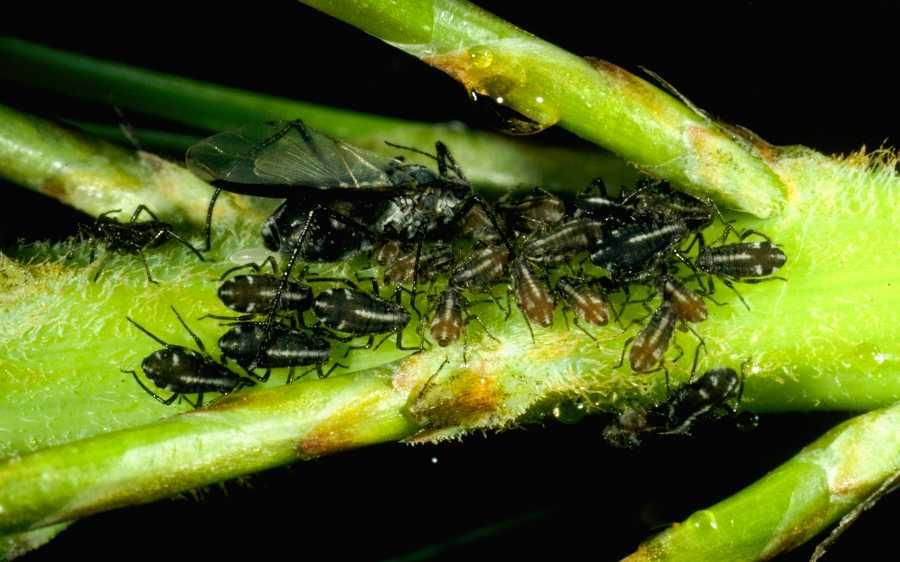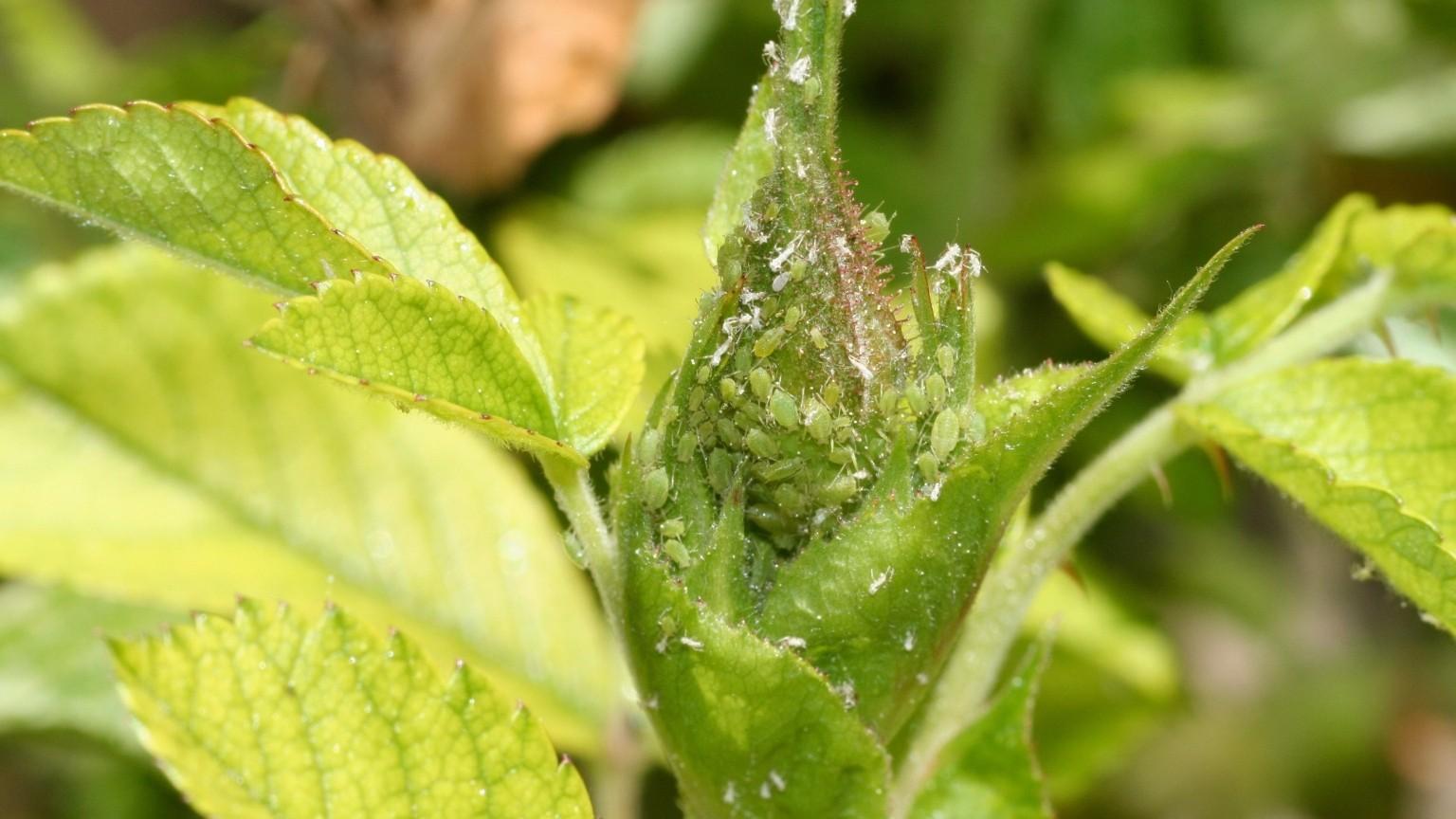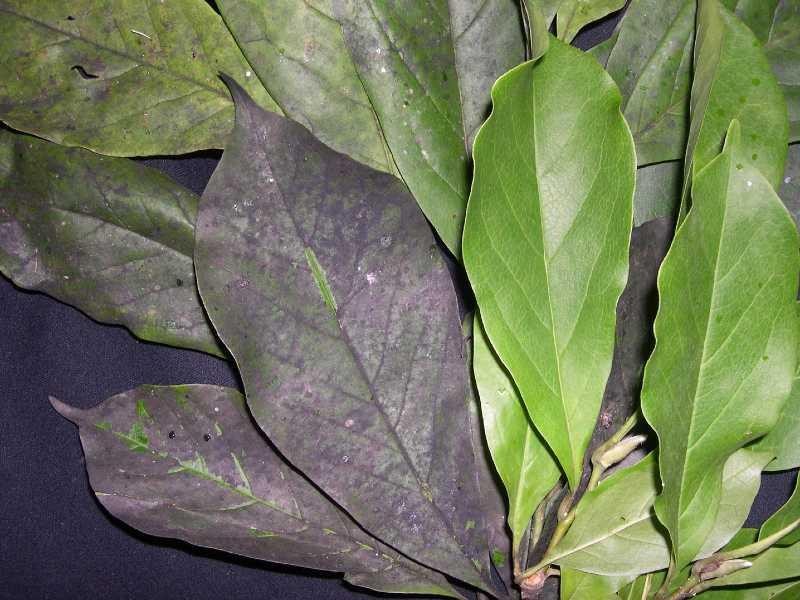Key points
- Aphids (plant lice) are common plant feeding insects. Usually, they do not occur in damaging numbers.
- Occasionally large populations develop that may temporarily reduce the aesthetic quality of trees and shrubs but can damage small plants like annual flowers.

Photo: J. A. Davidson, U of MD
Appearance and habits
- Most mature aphids are about an eighth of an inch long and are yellow or light green.
- A few are black, shades of red, brown, white, or grey.
- Aphids may be winged or wingless.
- Each aphid has 6 thin legs, 2 antennae on the head, a pair of tubes on the back, and a slender “beak” which is pushed into plants to suck sap.
- Most aphids prefer to feed on buds and the underside of terminal leaves, however, some species are adapted to feed on roots.
Aphids on needled evergreens
- Several species occur on needled evergreen shrubs in Maryland.
- The white pine aphid, Cinara strobi feeds only on white pine.
- Winged adults are 1/16 inch (4 mm) long. The body is shiny dark brown to black, with a white stripe down the middle of the back and powdery white spots on the sides. The eggs overwinter on the needles.
- Heavy infestations of this aphid may kill young shrubs or branches of large shrubs. Several other species of aphids Cinara, Eulachnus, Essigella, and Schizolachnus infest other species of pine. And there are other species of aphids that attack juniper, spruce, and fir.
Life cycle
- Aphid populations may build up quickly.
- When the overwintering eggs hatch in the spring, usually April or May, the emerging insects are all females.
- After that, females produce females (generally they are born alive) without male fertilization, throughout the summer.
- In hot weather, a generation may be produced every 1-2 weeks.
- In the fall, a generation of both males and females appears. The two sexes then mate and the females deposit oval, black eggs on the bark of shrubs and trees.
- These eggs do not hatch until the next spring.



